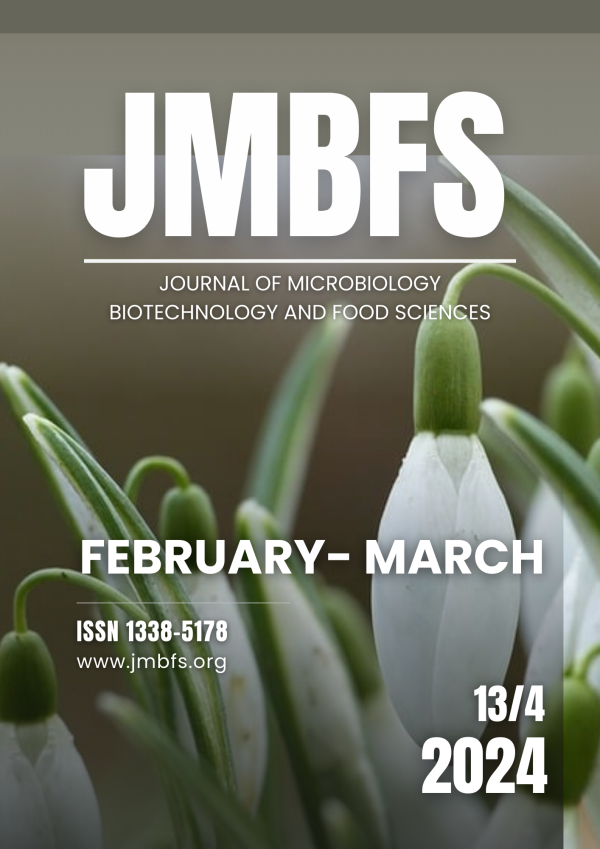HYGIENIC QUALITY OF CHICKPEA SPREADS IN RELATION TO THE USED INGREDIENTS AND STORAGE CONDITIONS
DOI:
https://doi.org/10.55251/jmbfs.10556Keywords:
chickpea spread, hygienic quality, ingredients, storage, analysisAbstract
The aim of research was to verify variability of selected parameters of hygienic quality of chickpea spreads in relation to the used ingredients and storage conditions. Four basic groups of chickpea spreads (A, B, C, D) contained the same ingredients (boiled chickpea, salt, garlic). The decisive factor for assessing their hygienic quality was the addition of two different vegetable oils and lemon juice. The chickpea spreads were analyzed fresh, then after 24 and 48 hours of storage at a temperature of 4 and 8 °C. Using the plate dilution method was detected the presence of the total viable count (TVC), coliform bacteria, Bacillus cereus, microscopic filamentous fungi (MMF) and yeast. The following parameters were determined within the physic-chemical analyses: pH, water activity and salt content. The data were processed to the analysis of variance (ANOVA) in the general linear models (GLM), Scheffe’s test and Pearson correlation coefficients (rxy). The presence of MFF and yeast in samples of chickpea spreads was minimal. A higher amount of yeast was detected in the spread with sunflower oil (B - on average of 4.9.102 CFU/g). The least amounts of coliform bacteria were found in the group of chickpea spreads with olive oil (<4.101 CFU/g). The presence of the bacterium B. cereus was not proven (<1.101 CFU/g). On the contrary, in chickpea spreads there was a higher representation of TVC (from 3.08 to 4.52 log CFU/g). High water activity (0.95 to 0.99) together with pH range (6.16 to 6.45), chickpea spreads are an ideal medium for the growth of various microorganisms. The average values of NaCl in fresh chickpea spreads were from 0.624 g/100 g (D) to 0.783 g/100 g (B). Most correlations between individual indicators in chickpea spreads were not statistically significant (P>0.05). A statistically highly significant difference between the two variables - pH and aw (P<0.01) was detected in sample A8b. The results showed that the chickpea spread with olive oil and lemon juice had the best properties in terms of safety. However, spreads represent an ideal environment for the growth of various microorganisms.
Downloads
Downloads
Published
How to Cite
Issue
Section
License
Copyright (c) 2023 Lucia Zelenakova, Anna Kolesarova, Andrea Mendelova, Martina Fikselova, Jana Ziarovska

This work is licensed under a Creative Commons Attribution 4.0 International License.
All papers published in the Journal of Microbiology, Biotechnology and Food Sciences are published under a CC-BY licence (CC-BY 4.0). Published materials can be shared (copy and redistribute the material in any medium or format) and adapted (remix, transform, and build upon the material for any purpose, even commercially) with specifying the author(s).





